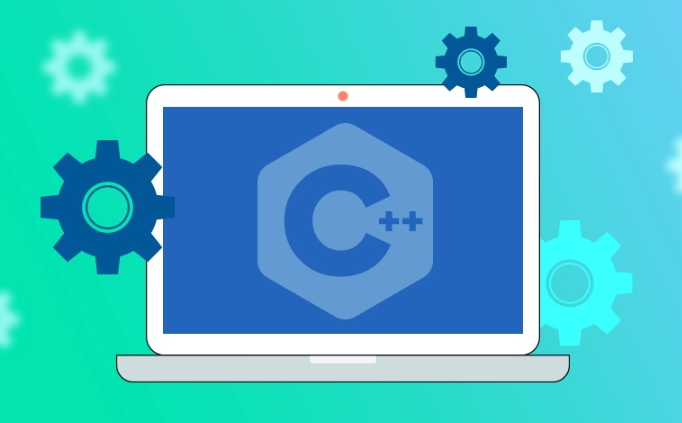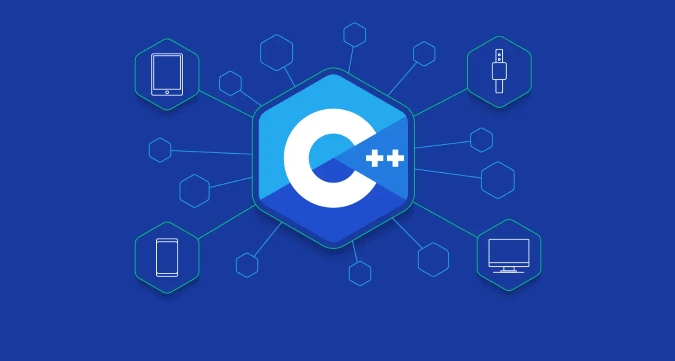What are C 20 concepts and how to use them?
Jul 12, 2025 am 02:26 AMC 20 Concepts is a mechanism for imposing constraints on template parameters to clarify the conditions that a specified type must meet. By limiting the template parameter type, it makes template programming clearer and easier to maintain, and improves the readability of compile error information. For example, std::integral restricts the template parameters to integers; users can also customize Concept, such as Addable to check whether the type supports addition operations. Its common uses include: 1. Simplify template code and avoid SFINAE writing; 2. Improve code readability; 3. Improve compilation error prompts; 4. Build a safe generic library. When using it, multiple Concepts can be combined and default implementations can be provided, but over-design should be avoided. It is recommended to add constraints after the logic is stable.

C 20 introduces Concepts, an important feature that makes template programming clearer and easier to maintain. Its core function is to add "constraints" to template parameters, so that you can clearly specify what conditions a certain type must meet when writing templates, rather than just waiting for a compilation error to expose the problem.

What are C 20 Concepts?
In short, Concepts is a mechanism for imposing constraints on template parameters. You can understand it as the declaration method of "type interface". For example, if you want a template function to only accept types that support addition operations, you can use Concept to limit it.

Previous template error messages were often long and difficult to understand, and Concepts could check whether the type meets the requirements early in compilation and give clearer error prompts.
For example:

template<typename T>
std::integral<T>
T add(T a, T b) {
return ab;
} Here std::integral<T> is a Concept provided by a standard library, indicating that T must be an integer. If a floating point number or string is passed in, the compiler will directly report an error instead of failing during the operation.
How to define your own Concept?
In addition to using Concept in the standard library (such as std::integral , std::copyable , etc.), you can also define it yourself:
template<typename T>
concept Addable = requires(T a, T b) {
ab; // Check whether it can be added};Then you can use it like this:
template<Addable T>
T add(T a, T b) {
return ab;
}This function only accepts types that support addition operations.
Several common uses of Concepts
- Simplified template code : Avoid complicated enable_if or SFINAE writing.
- Improve readability : People can tell at a glance what types of parameters your template needs.
- Improve error message : The compiler can detect problems earlier and give specific prompts.
- Build a safer generic library : For example, when writing containers or algorithms, make sure the input types behave consistently.
For example, if you write a sort function:
template<std::random_access_iterator It> void sort(It begin, It end);
This is much more intuitive than before, by relying on macros or traits.
Several details to pay attention to when using
Concept can be used in combination :
template<typename T> concept MyType = std::copyable<T> && std::default_initializable<T>;
-
Concept can have a default implementation :
For example, you can define a
PrintableConcept and provide a general printing function. -
Don't over-design :
Although Concepts is powerful, there is no need to add constraints to each template at the beginning. Write the logic first, and then add restrictions according to actual needs.
Basically that's it. Concepts is not complicated, but it does change the way we write templates.
The above is the detailed content of What are C 20 concepts and how to use them?. For more information, please follow other related articles on the PHP Chinese website!

Hot AI Tools

Undress AI Tool
Undress images for free

Undresser.AI Undress
AI-powered app for creating realistic nude photos

AI Clothes Remover
Online AI tool for removing clothes from photos.

Clothoff.io
AI clothes remover

Video Face Swap
Swap faces in any video effortlessly with our completely free AI face swap tool!

Hot Article

Hot Tools

Notepad++7.3.1
Easy-to-use and free code editor

SublimeText3 Chinese version
Chinese version, very easy to use

Zend Studio 13.0.1
Powerful PHP integrated development environment

Dreamweaver CS6
Visual web development tools

SublimeText3 Mac version
God-level code editing software (SublimeText3)

Hot Topics
 What is the relationship between generic programming and template metaprogramming?
Apr 25, 2024 am 08:54 AM
What is the relationship between generic programming and template metaprogramming?
Apr 25, 2024 am 08:54 AM
Generic programming and template metaprogramming are two powerful techniques in modern C++ for processing different types of data at runtime (generic programming) and creating and evaluating code at compile time (template metaprogramming). Although they are both based on templates, they are very different in functionality and usage. In practice, the two techniques are often used together, for example, generic code can be combined with template metaprogramming to create and instantiate data structures at runtime.
 Exploring C++ Template Metaprogramming: The Secret Weapon to Improve Code Reusability
Nov 27, 2023 pm 12:14 PM
Exploring C++ Template Metaprogramming: The Secret Weapon to Improve Code Reusability
Nov 27, 2023 pm 12:14 PM
C++ is a powerful programming language, but in practice, sometimes a lot of redundant code appears. In order to improve code reusability, C++ introduced template metaprogramming (TemplateMetaprogramming). This is a technique that leverages the compiler's template mechanism for efficient metaprogramming. This article will introduce the basic concepts and application scenarios of template metaprogramming, and how to use it to build an efficient code base. Macroscopically speaking, C++ template metaprogramming encapsulates common programming patterns, algorithms, data structures, etc.
 The relationship between C++ function parameter passing methods and template metaprogramming
Apr 12, 2024 pm 01:21 PM
The relationship between C++ function parameter passing methods and template metaprogramming
Apr 12, 2024 pm 01:21 PM
The relationship between the function parameter passing method and template metaprogramming: value passing: copying the parameter value, the function cannot modify the original variable. Pass by reference: Pass a reference to the parameter, and the function can modify the original variable. Pointer passing: passing a pointer to a parameter, the function can modify the original variable by dereferencing the pointer. Template metaprogramming can generate different codes based on parameter types by specifying the parameter passing method.
 Can C++ static functions be used to implement template metaprogramming?
Apr 16, 2024 pm 02:09 PM
Can C++ static functions be used to implement template metaprogramming?
Apr 16, 2024 pm 02:09 PM
C++ static functions can be used in template metaprogramming for: Constant evaluation type conversion code generation For example, static functions can be used to calculate compile-time constants, such as array lengths, to avoid runtime calculation overhead.
 How to use templates in C?
Apr 28, 2025 pm 09:21 PM
How to use templates in C?
Apr 28, 2025 pm 09:21 PM
C templates are used to implement generic programming, allowing for the writing of general code. 1) Define template functions, such as max functions, which are suitable for any type. 2) Create template classes, such as general container classes. 3) Pay attention to template instantiation, compilation time, template specialization, debugging and error information. 4) Follow best practices, keep the code simple, and consider using constraint template parameters.
 C++ memory optimization techniques based on template metaprogramming
Jun 02, 2024 am 10:30 AM
C++ memory optimization techniques based on template metaprogramming
Jun 02, 2024 am 10:30 AM
Memory optimization techniques based on template metaprogramming in C++ are implemented in the following ways: Code generation: dynamically generate code at compile time to avoid allocating memory at runtime. Meta-functions: perform calculations at compile time and generate optimized code. Practical case: Array pool avoids the overhead of multiple allocations by sharing array memory.
 The role of C++ template metaprogramming in server architecture
Jun 01, 2024 pm 10:42 PM
The role of C++ template metaprogramming in server architecture
Jun 01, 2024 pm 10:42 PM
The advantages of C++ template metaprogramming (TMP) in server architecture include: Performance optimization: The generated code has no runtime overhead because it is generated at compile time. High maintainability: Makes code more modular and reusable, allowing dynamic code generation based on type information. Code Generation: Can be used to generate complex code that is difficult to write manually.
 What are C 20 concepts and how to use them?
Jul 12, 2025 am 02:26 AM
What are C 20 concepts and how to use them?
Jul 12, 2025 am 02:26 AM
C 20Concepts is a mechanism for imposing constraints on template parameters to clarify the conditions that a specified type must meet. By limiting the template parameter type, it makes template programming clearer and easier to maintain, and improves the readability of compile error information. For example, std::integral restricts the template parameters to integers; users can also customize Concept, such as Addable check whether the type supports addition operations. Its common uses include: 1. Simplify template code and avoid SFINAE writing; 2. Improve code readability; 3. Improve compilation error prompts; 4. Build a safe generic library. When using it, multiple Concepts can be combined and default implementations can be provided, but over-design should be avoided. It is recommended to add approximately after the logic is stable.






